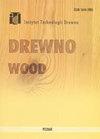Economic analysis of the collection and transportation of pruned branches from orchards for energy production.
IF 0.9
4区 农林科学
Q3 MATERIALS SCIENCE, PAPER & WOOD
引用次数: 5
Abstract
This economic analysis contains a case study for a 100 ha apple orchard where a pruning-to-energy (PtE) strategy is employed. Technical aspects of pruned biomass harvesting in apple orchards are outlined, with emphasis on the efficient harvesting of pruning residues using a dedicated baling machine. Economic aspects are approached using economic performance metrics such as the net present value (NPV) and internal rate of return (IRR). It is found, for a 10-year project on the 100 ha orchard, that the NPV is €5650, the IRR is 8.71% and the payback time is about 8.0 years. Sensitivity analysis revealed that the economic metrics are highly influenced by the quantity of prunings, orchard area, and the price of pruning residues at the final user. The distance from the orchard to the final user (6 km in the analysed case) and orchard labour costs are both less impactful. The analysis shows that pruned biomass harvesting is technologically feasible in apple orchards, while the obtained values of the economic metrics indicate the economic feasibility of such bioenergy solutions.果园剪枝采运用于能源生产的经济分析。
这个经济分析包含了一个100公顷苹果园的案例研究,其中采用了修剪能源(PtE)策略。概述了苹果果园修剪生物量收获的技术方面,重点是使用专用打捆机有效收获修剪残留物。经济方面采用经济绩效指标,如净现值(NPV)和内部收益率(IRR)。以100公顷果园为例,10年项目的净现值为5650欧元,内部收益率为8.71%,投资回收期约为8.0年。敏感性分析表明,经济指标受修剪数量、果园面积和最终用户修剪残留物价格的高度影响。从果园到最终用户的距离(在分析的案例中为6公里)和果园劳动力成本的影响都较小。分析表明,修剪后的生物质收获在苹果果园技术上是可行的,而获得的经济指标值表明了这种生物能源解决方案的经济可行性。
本文章由计算机程序翻译,如有差异,请以英文原文为准。
求助全文
约1分钟内获得全文
求助全文
来源期刊

Drewno
MATERIALS SCIENCE, PAPER & WOOD-
CiteScore
1.10
自引率
12.50%
发文量
0
审稿时长
>12 weeks
期刊介绍:
Wood. Research papers. Reports. Announcements" ("Drewno") is an international scientific journal that publishes original results of innovatory basic and applied research concerning technological, technical, economic and ecological issues important for the wood science and forest-based industries, including their environment, and interesting to the international recipients. "Drewno" is an Open Access biannual journal.
Aims and scope:
wood science: anatomy, biology, chemistry, physics
wood mechanical and chemical technology, inter alia, sawmilling, composite wood products, wooden construction, furniture making, wood pulp, paper making
material engineering, biocomposites, nanocomposites
material management
environmental protection, safety of the processes, products and working stations
biotechnology
bioenergy, biofuels
forestry: harvesting and wood quality
wood-based industries economics
The Editorial Board of the journal especially welcomes articles concerning increase in wood resources (wood mobilisation); innovative composites and lignocellulosic materials; new trends in the protection, modification and finishing of wood; biorefining of raw wood material; "green" building; new technologies of wood waste recycling; sustainable development; innovation management; and business networks.
 求助内容:
求助内容: 应助结果提醒方式:
应助结果提醒方式:


